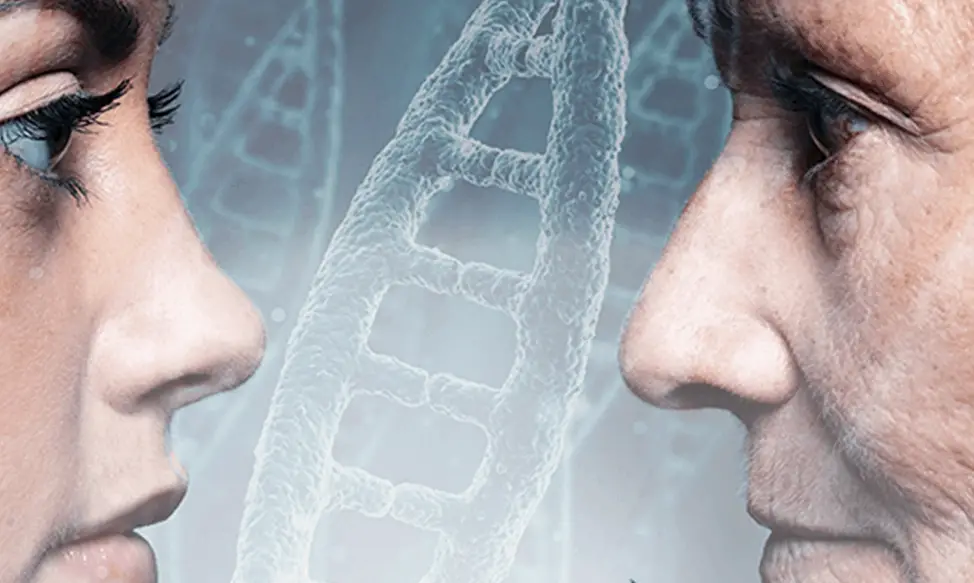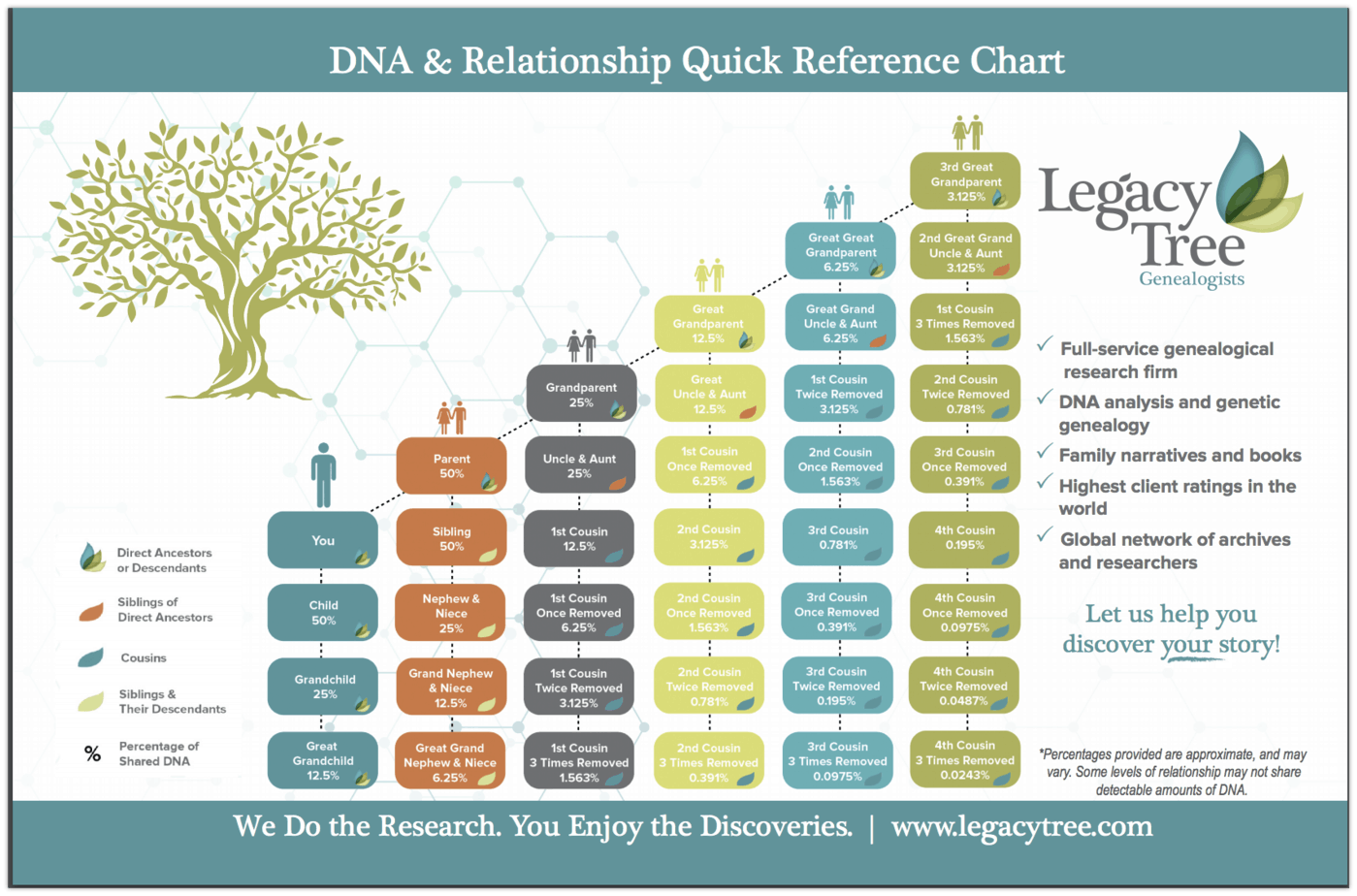This article advises you to test older relatives. Since I agree with this strategy, I am sharing this guest post by Legacy Tree Genealogists.

Why Test Older Relatives
Why should you test older relatives before exploring your own genetic genealogy? The answer lies in genetic inheritance patterns. There are four types of genetic inheritance patterns which genetic genealogists apply to family history research: mtDNA, Y-DNA, X-DNA and autosomal DNA.
Mitochondrial DNA (mtDNA) is inherited from an individual’s mother. She, in turn, inherited it from her mother in a line of direct maternal inheritance. Your mitochondrial DNA will be similar if not the same as the mitochondrial DNA of your siblings, your maternal aunts and uncles and many other maternal relatives. The Y-chromosome (Y-DNA), or the male sex chromosome, is inherited by males from their father who, in turn, inherited it from his father in a direct line of paternal inheritance. A male’s Y chromosome will be similar if not the same as the Y-DNA of their full brothers, paternal uncles and other paternal relatives.
Because of the direct inheritance patterns of mitochondrial and Y-DNA, it is possible to determine the Y-DNA and mitochondrial DNA signatures of deceased ancestors by selectively testing known individuals. In this regard, it may not be as urgent to complete testing older relatives for their Y-DNA and mtDNA unless they are the last living representatives who carry that DNA. For example, if your father had only daughters and he had no siblings, then it would be important to test his Y-DNA since he may be the last living close relative with that information. You may also want to test his mtDNA for the same reason. Even when there are other relatives who could stand in and represent the DNA rather than testing older relatives, occasionally mutations are introduced in Y-DNA and mtDNA lineages, so it is still a good idea to pursue testing older relatives.
Even More Important: Test Older Relatives on Autosomal DNA Tests
While there may be situations in which you would prioritize testing older relatives for Y-DNA and mtDNA testing, it is more common to prioritize testing older relatives for autosomal DNA testing. Currently there are five major companies offering autosomal DNA testing for the purposes of ancestry: 23andMe, Ancestry.com, Family Tree DNA, MyHeritage and Living DNA. Each of these tests will include information regarding X-DNA and autosomal DNA. The X chromosome is the female sex chromosome. Males inherit one X chromosome from their mother, whereas females inherit one from their mother and one from their father. Rather than inheriting a second X chromosome, males inherit a Y chromosome from their father. The remaining 22 pairs of chromosomes in human cells are known as the autosomal DNA. Each individual inherits 50% of their autosomal DNA from their mother and 50% from their father. Beyond that, they inherit approximately 25% from each grandparent and approximately half the previous amount from every subsequent generation of ancestry. Eventually, due to the random nature of autosomal DNA inheritance, there will be some ancestors from whom an individual does not inherit significant portions of their autosomal DNA.
Any autosomal or X-DNA you inherit from a specific ancestor has to be less than or equal to the amount of DNA that your parent inherited from that same ancestor which in turn is a subset of the DNA that your grandparent inherited from that same ancestor. While your grandmother may share 25% of her DNA with your second great grandparent, you will share only about 6% of your DNA with that same ancestor. The more DNA a test subject shares with an ancestor, the more matches they will have who are related through that same ancestor. The more matches they have who are related through an ancestor of interest, the higher the chance is that they will be able to make genealogical discoveries through collaboration, correspondence and analysis. For these reasons, priority for your autosomal DNA testing should be to test older relatives who share more DNA in common with your ancestors than you do.

Click the image above for a free high-resolution download of the chart.
Another way to view this prioritization is through the concept of coverage. By testing yourself, 100% of your autosomal DNA will be represented in a database, 50% of your parents’ DNA will be represented, and 25% of each of your grandparents’ DNA will be represented in the database. Though each individual inherits 50% of their DNA from each parent, siblings inherit different 50% portions. Though they will share some DNA in common with a sibling, they will also carry unique DNA. By testing a sibling, you could obtain approximately 75% coverage of your parents’ DNA and about 37% coverage of each of your grandparents’ DNA. In order to achieve 95% coverage of a deceased parent, on average it is necessary to test 4 of their living children, if they had fewer than 4 children or if they do not have other living descendants, then there are severe limitations on how much of their DNA can be recovered and represented in the database through testing of their descendants.
Beyond our advice to test older relatives, it is also important to provide for the continued maintenance, preservation and inheritance of their DNA data. Family Tree DNA provides a beneficiary form for DNA test results by which you can transfer ownership of the DNA test results to a designated beneficiary in the event of their decease. Make sure that you provide for the continued inheritance of DNA evidence so that the test results can be used long into the future.
If you test older relatives, you ensure that their DNA will be represented in the current databases and you increase the chance that future generations will be able to connect with them through these means. Though we as genealogists have begun to treat DNA as we would other records in our analysis, correlation and proof arguments, we also need to start thinking like archivists and dedicate time and effort to acquiring and preserving DNA records so that the information of our ancestors’ DNA will be available for future generations of researchers. Don’t wait until it’s too late. Test your older relatives today!
About Legacy Tree Genealogists
Legacy Tree Genealogists is the world’s highest client-rated genealogy research firm, and recommended research partner of MyHeritage. Founded in 2004, the company provides full-service genealogical research for clients worldwide, helping them discover their roots and personal history through records, narratives, and DNA.
Click this link to Legacy Tree Genealogists for more information about them and their services.
Exclusive Offer for DNA-Testing-Adviser readers:
Receive $100 off a 20-hour research project from Legacy Tree Genealogists using code SAVE100.
